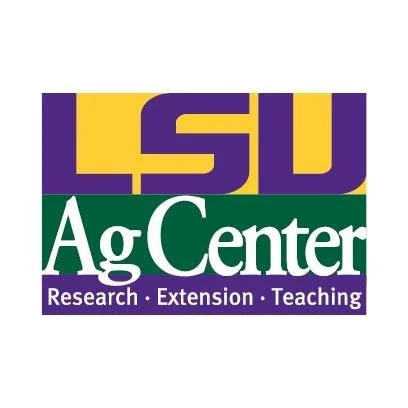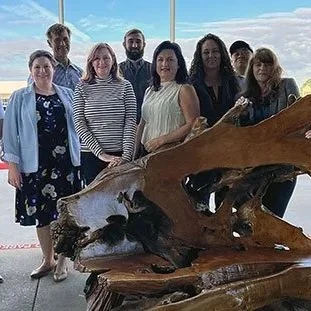The U.S. rice industry has made impressive gains in sustainability over the last 40 years. Yet the crop is still at risk due to climate change, disease outbreaks, pests and human activity that can cause disturbances in production. The LSU AgCenter is continuing its research on rice sustainability, in large part thanks to a $10 million grant from the U.S. Department of Agriculture.
Read MoreAfter four people have died and several others became sick after eating raw Gulf oysters contaminated with the flesh-eating bacteria Vibrio vulnificus, the LSU Ag Center is urging you to use caution before eating raw oysters. Seafood extension specialist Evelyn Watts says the risk is especially high during the summer.
“Oysters are affected by Vibrio vulnificus. That is a pathogen that mostly grows in brackish or salt water. Mostly, it’s going to be in the warm months,” Watts explained.
Read MoreThis month’s 2025/26 U.S. corn outlook indicates greater supplies, larger exports, and a slight reduction in ending stocks. Projected beginning stocks for 2025/26 are 20 million bushels higher based on a lower use forecast for 2024/25, with reductions in imports and corn used for ethanol partially offset by an increase in exports. Corn production for 2025/26 is forecast at 16.8 billion bushels, up 72 million from last month as a 2.1-bushel reduction in yield to 186.7 bushels per acre is more than offset by a 1.3 million acre increase in harvested area to 90.0 million acres.
Read MoreTwo people recently died in Louisiana after eating raw Gulf oysters contaminated with the flesh-eating bacteria Vibrio vulnificus. Now that we have returned to the “r” months of autumn, a period historically considered safer to consume the mollusks on the half shell, seafood lovers are rightfully on edge about enjoying what many consider a saltwater delicacy.
Read MoreSmall- and medium-scale farmers looking to deepen their skills in organic production are invited to attend the Advanced Organic Farming Workshop on Sept. 27 at LSU.
Read MoreAfter Hurricanes Katrina and Rita devastated Louisiana and brought billions of dollars of damage to the state, lawmakers worked with researchers, engineers and others to create and implement new codes and laws in an attempt to prevent such serious damage happening again.
Read MoreThis report projects corn, soybeans, wheat, and rice futures prices for the United States for the third quarter (Q3) of 2025. Our analysis utilizes historical data on both cash prices (the price for immediate delivery) and futures prices (the price agreed upon for delivery at a future date).
We aggregate the daily futures prices into quarterly averages to simplify our analysis. Using this dataset, we train several machine learning models to predict futures prices for all four commodities.
Read MoreWhen Hurricane Katrina hit the coast on Aug. 29 and Hurricane Rita followed on Sept. 24, much of south Louisiana sustained tremendous damage. The storms caused more than 1,100 deaths, according to the Louisiana Department of Health; displaced several communities; and led to $108 billion in damage, according to the National Weather Service. LSU AgCenter economists estimated that the state’s agricultural sectors sustained nearly $1.6 billion in losses from the storms.
Read MoreAn invasive insect pest of rice, the rice Delphacid (Tagosodes orizicolus), has been detected in Louisiana. No adverse impacts on rice have been observed in Louisiana as yet, but the detection is certainly a concern. The inset is a major pest of rice in Texas, particularly late-planted and second crop rice.
Specimens were first detected in July in Tensas Parish. Subsequent surveys detected an infestation in western Calcasieu Parish, but its distribution in the State remains largely unknown. It was not detected during initial observations in other areas of northeast or southwest Louisiana, but its occurrence in those are still being investigated. Producers in Calcasieu and Tensas Parishes should exercise caution to avoid additional spread. Rice straw or hay should not be moved out of these Parishes. Producers in other Parishes that detect possible Delphacid infestations should report the sites to LSU AgCenter extension agents.
More information on rice delphacid biology and management can be found on the LSU AgCenter website.
Read MoreIn honor of National Farm to School Month this October, Seeds to Success: The Louisiana Farm to School Program and the LSU AgCenter are inviting K through 12 students across Louisiana to showcase their creativity in the 2025 Louisiana Farm to School Art Contest. Students are encouraged to explore Louisiana agriculture and create artwork featuring foods grown in the state, including fruits, vegetables, meat, dairy and seafood.
Read MoreIn honor of National Farm to School Month this October, Seeds to Success: The Louisiana Farm to School Program and the LSU AgCenter are inviting K through 12 students across Louisiana to showcase their creativity in the 2025 Louisiana Farm to School Art Contest. Students are encouraged to explore Louisiana agriculture and create artwork featuring foods grown in the state, including fruits, vegetables, meat, dairy and seafood.
Read MoreApplications are now being accepted for the Louisiana Sea Grant Fisheries and Seafood Leadership Program.
The program launched in 2023 to help enhance leadership in the Louisiana Commercial Fishing and Seafood Industry.
The Louisiana Sea Grant Fisheries & Seafood Leadership Program (FSLP) is a one-year program divided into four, two-day workshops for networking and skill-building. It includes seminars with experts, on-site tours, personal skills improvement, and meetings with business and government leaders in Louisiana.
Read MoreIt isn’t every day that a former Time Magazine 100 Most Influential People of the Year and the subject of an Emmy-winning HBO movie speaks at an LSU AgCenter event. But that is exactly what happened when internationally renowned author, livestock welfare and autism awareness advocate Temple Grandin addressed the Louisiana Association of Extension 4-H Youth Development Professionals last week in Vernon Parish.
Read MoreWhen Hurricane Katrina hit the coast on Aug. 29 and Hurricane Rita followed on Sept. 24, much of south Louisiana sustained tremendous damage. The storms caused more than 1,100 deaths, according to the Louisiana Department of Health; displaced several communities; and led to $108 billion in damage, according to the National Weather Service.
Read MoreEach year, the LSU AgCenter tests commercially available wheat varieties at field sites across Louisiana. We collect data on resistance to common diseases, maturity, grain quality, and yield. These are some of the varieties we think are well-suited for consistent production in different part of the state, based on a balance between multi-year yield pefromance and test weight, maturity, and resistance to the diseases common in this state. These may not be the only varieties that will work on your farm, but we encourage you to consider them as part of a set of planted varieties.
Read More













